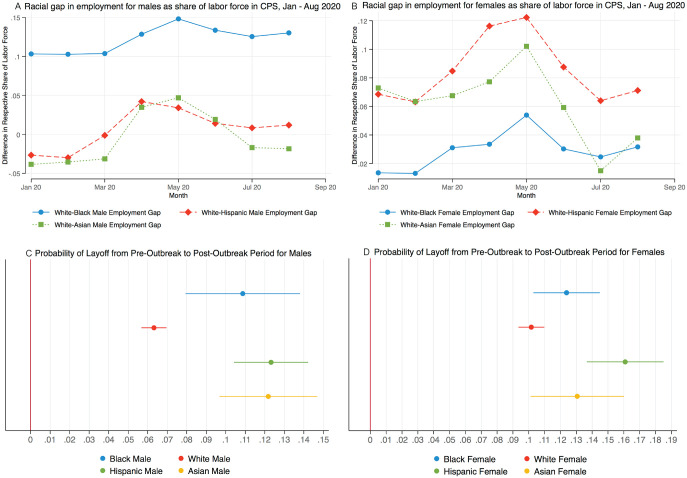Figure 1.
(A and B) Racial gaps in employment. (C and D) Probability of being laid off in the post-outbreak period compared with the pre-outbreak period.
Source: All data are from the Current Population Survey (CPS) from the U.S. Census Bureau and the U.S. Bureau of Labor Statistics, which was accessed through the Integrated Public Use Microdata Series (Flood et al. 2020).
Note: In Figures 1A and 1B, the employment rate measurement is based on the employment-population ratio for prime-age workers (25–64 years old) from January through August 2020. Figures 1C and 1D show the coefficient estimates for the dependent variable, which is an indicator for being unemployed because of a layoff. The status of being unemployed because of a layoff is regressed on an indicator variable for the post–coronavirus disease 2019 time period (pre-outbreak period = 0, post-outbreak period = 1). The post-outbreak period refers to the April and May 2020 CPS rounds. The individual fixed-effect regression is estimated separately for white men, white women, black men, black women, Hispanic men, Hispanic women, Asian men, and Asian women. The full regression estimates for all race and gender groups are shown in Table 1S in the Online Supplement. All regressions include controls for age, education, and individual fixed effects.

